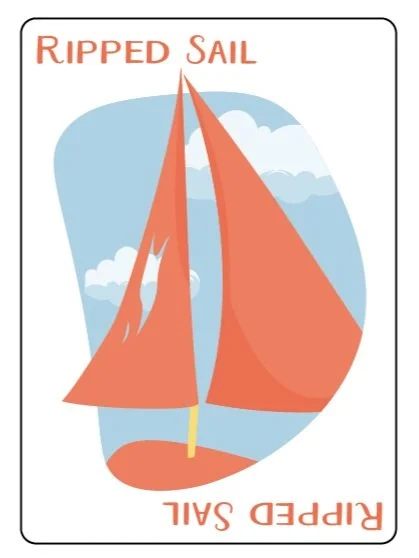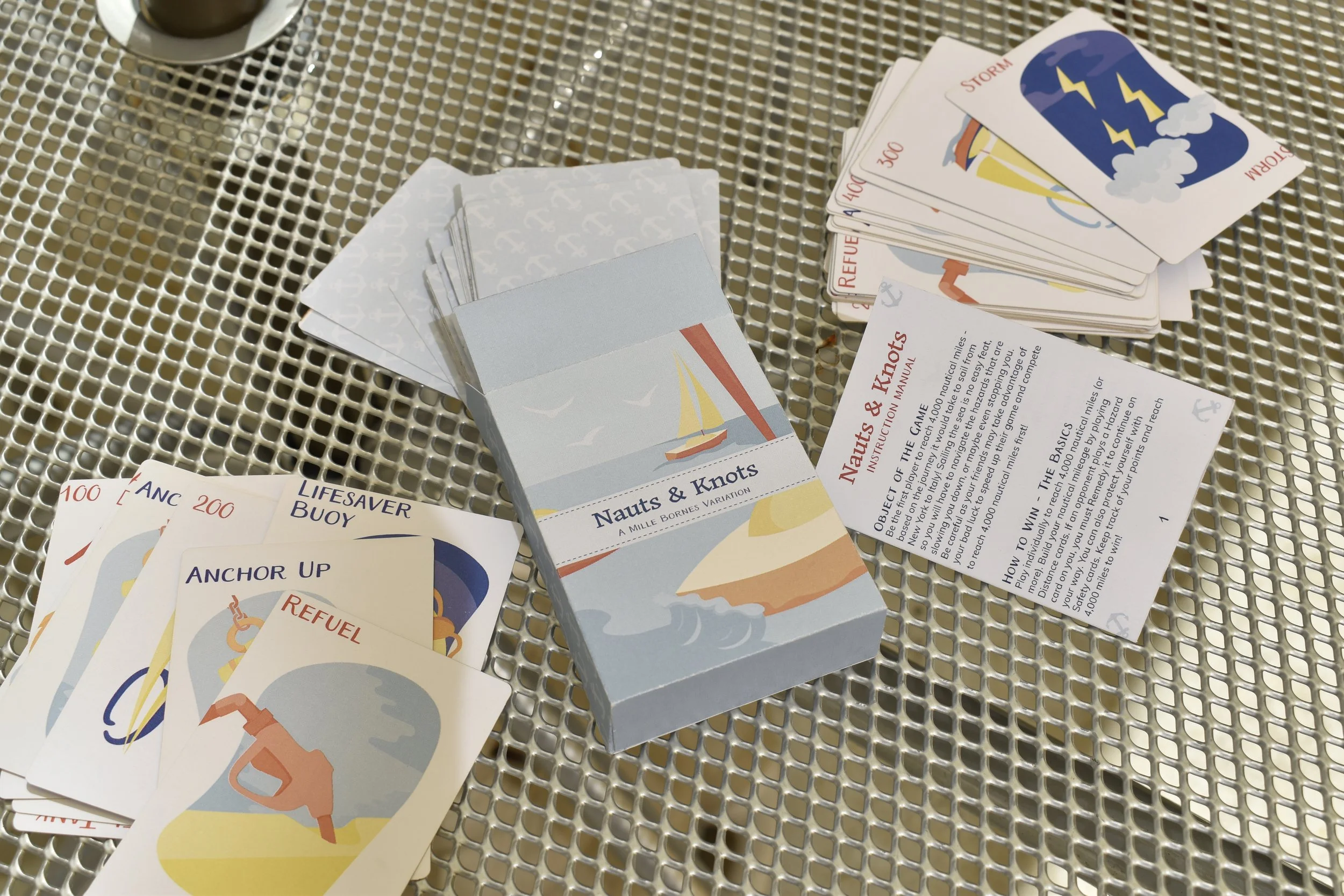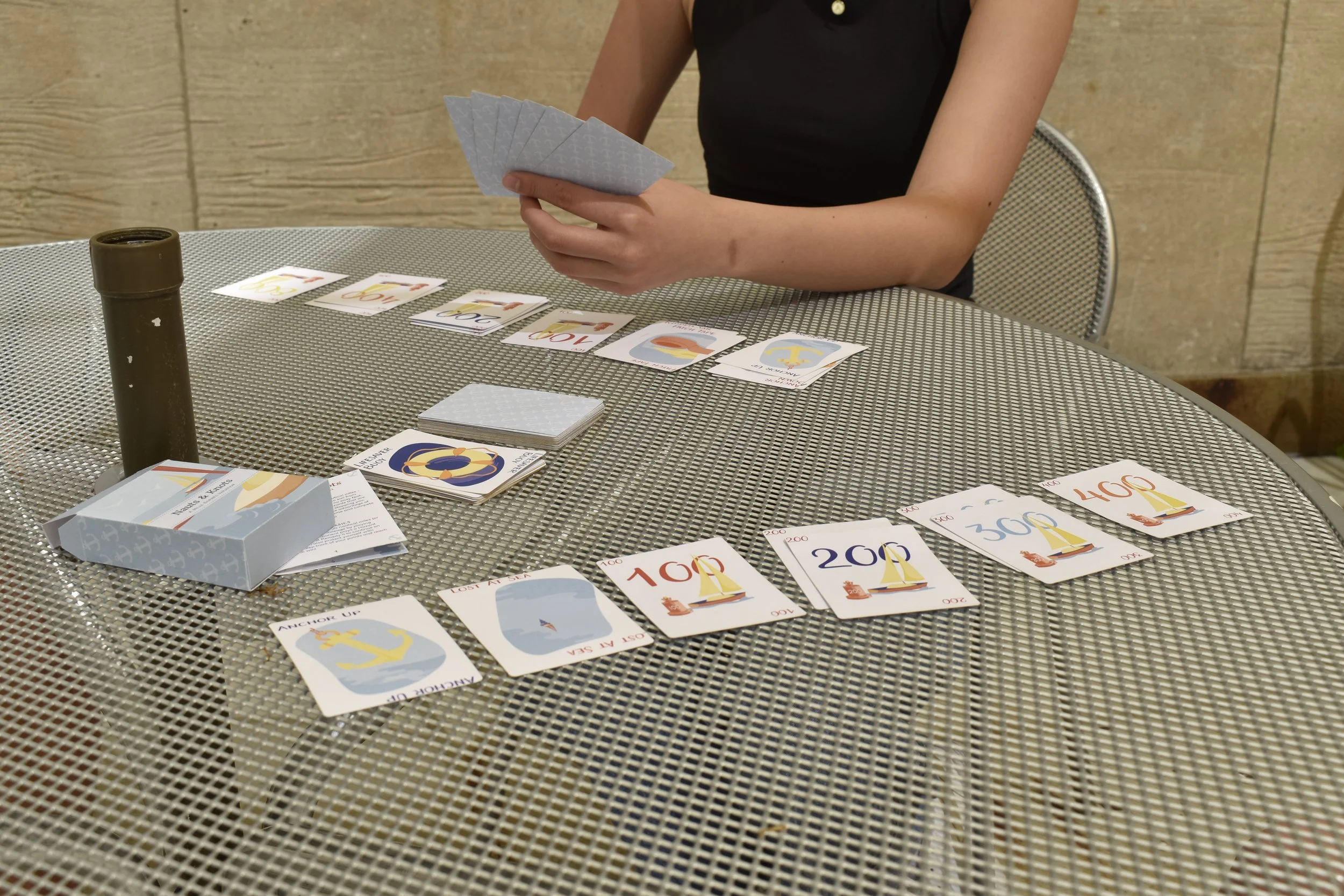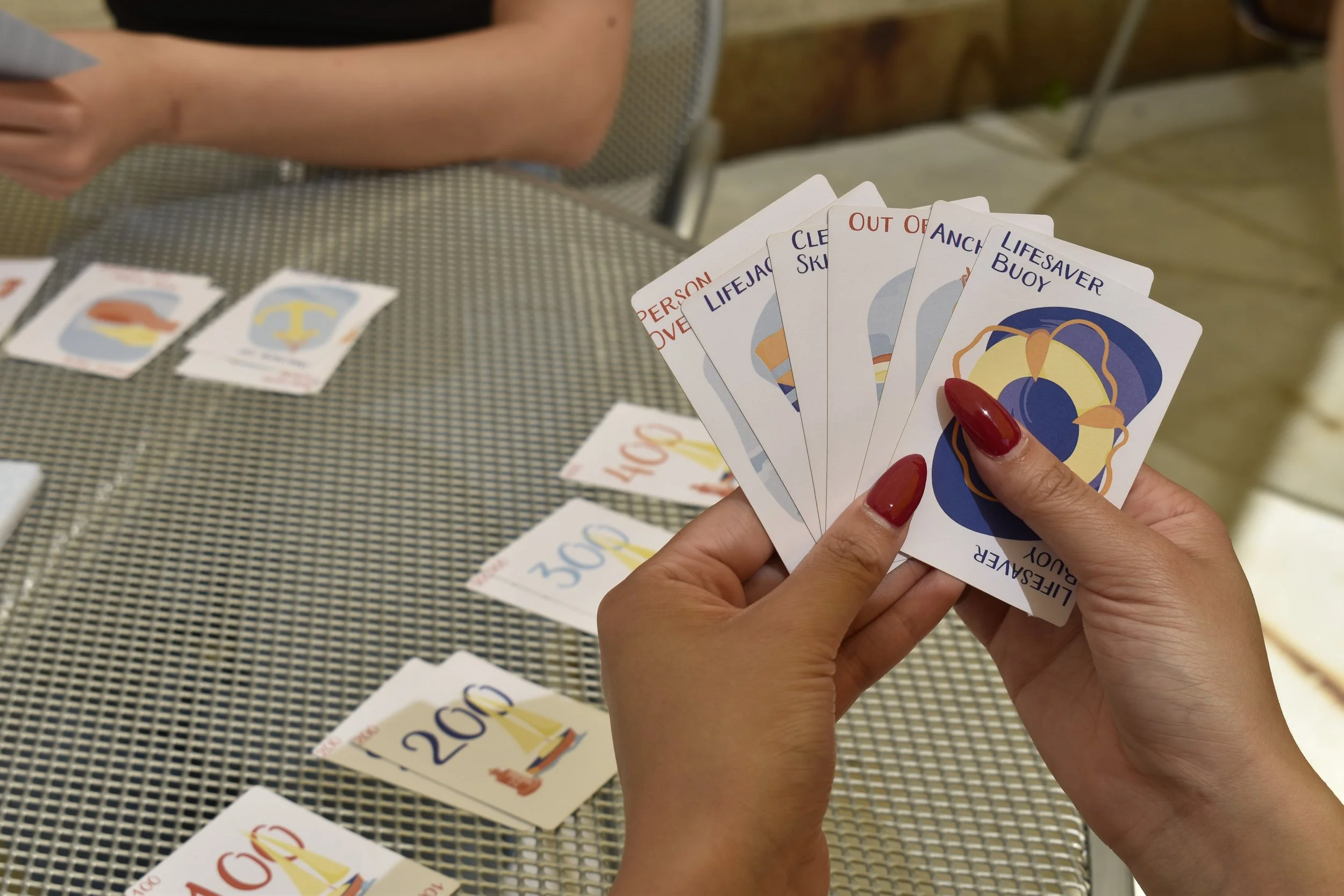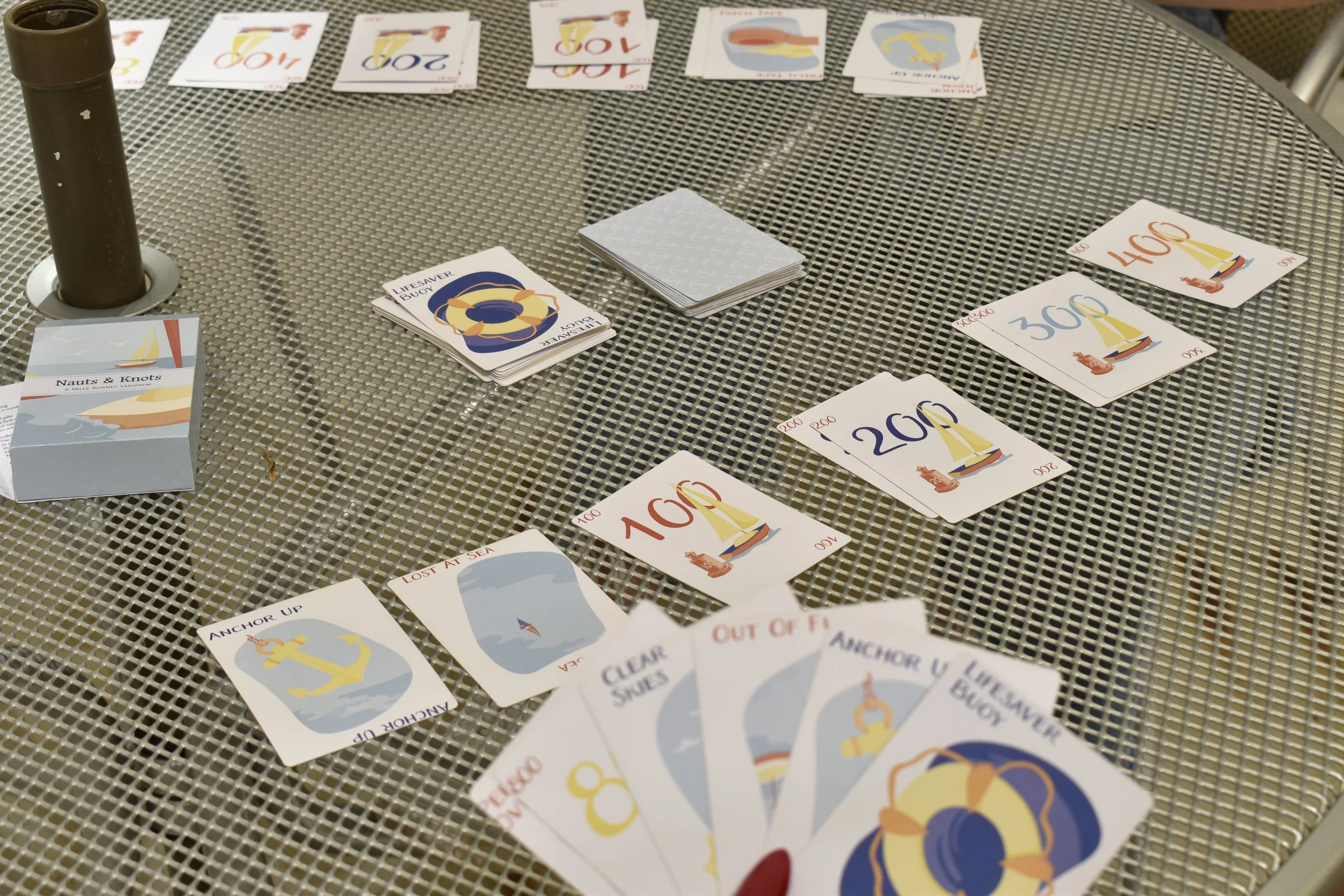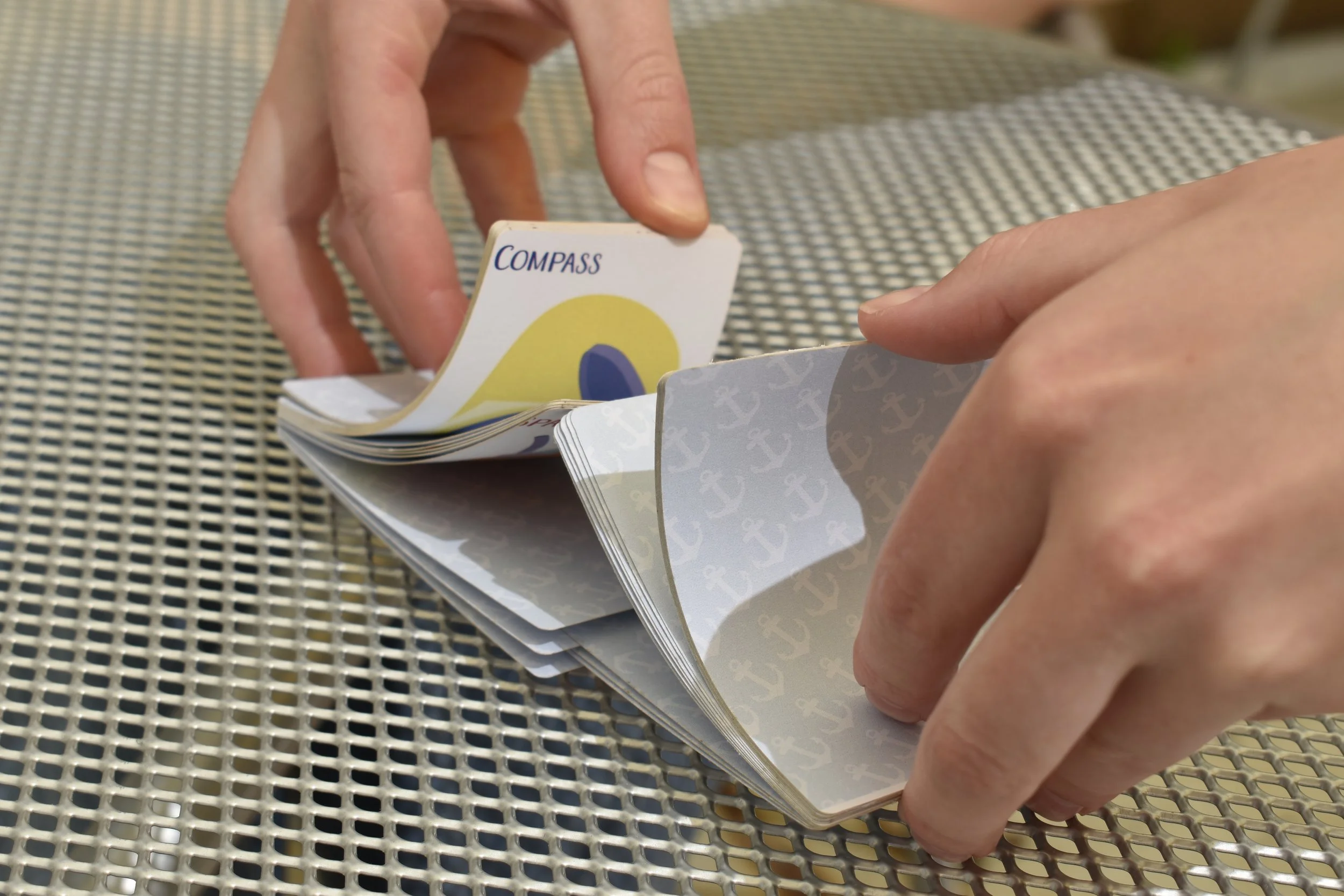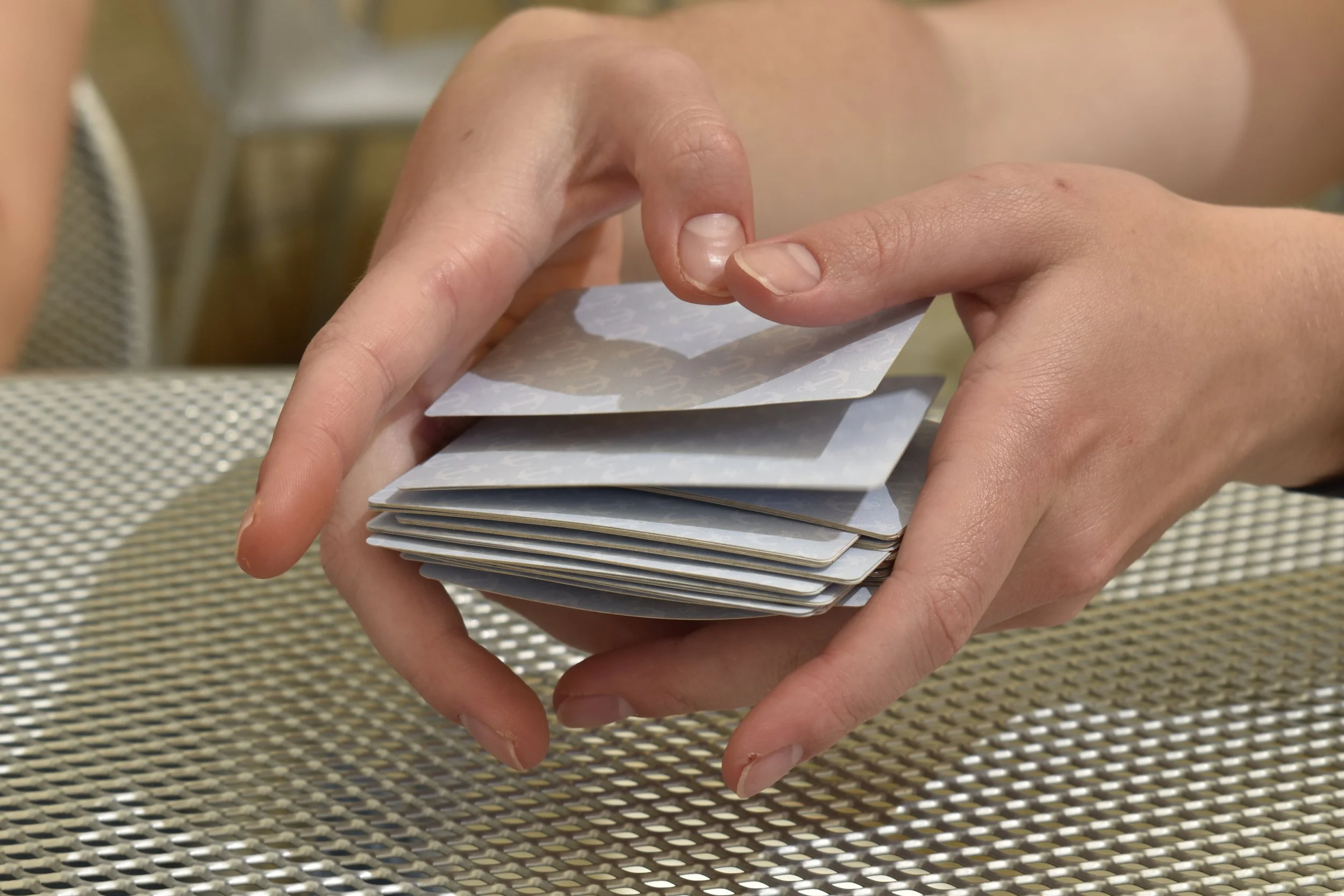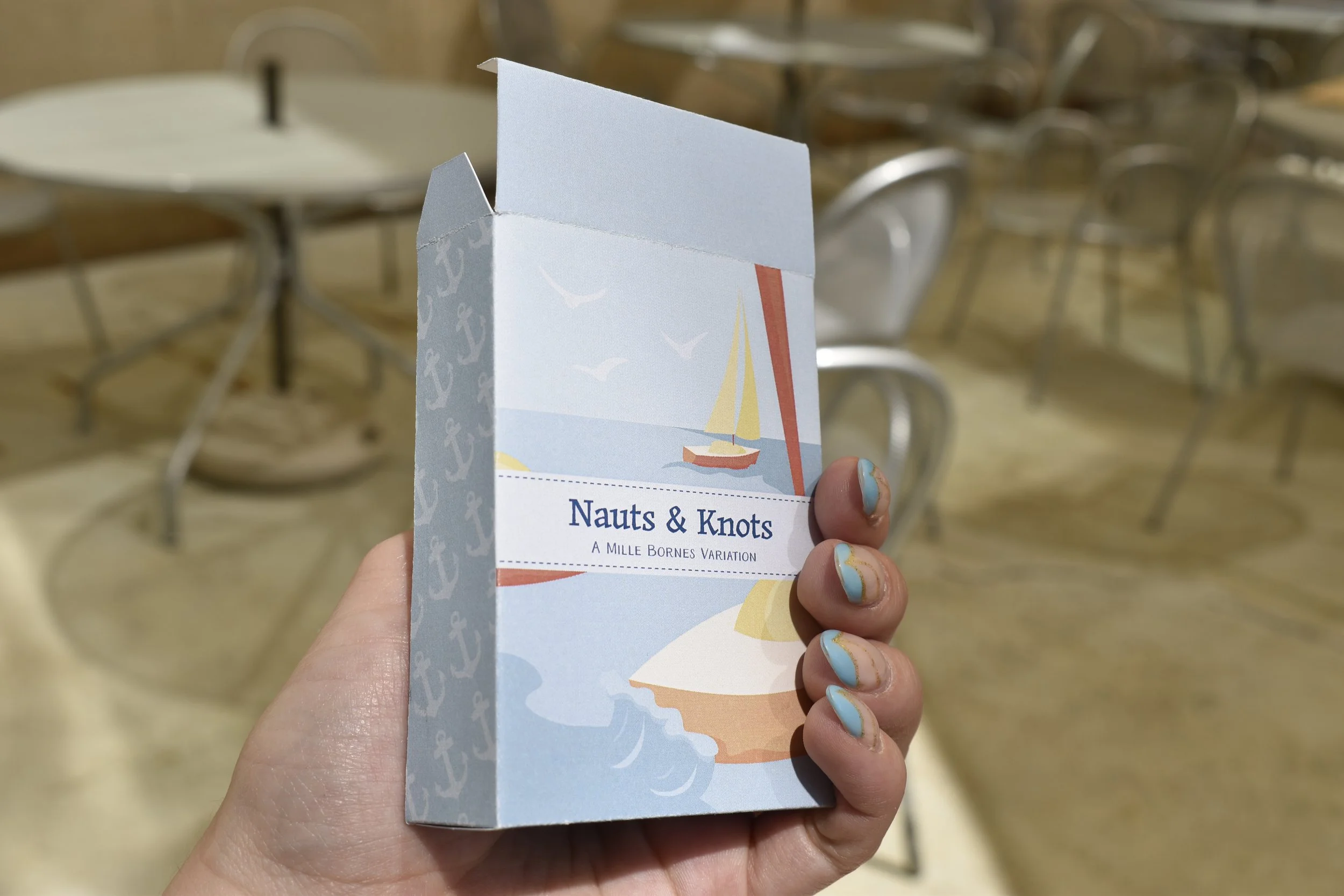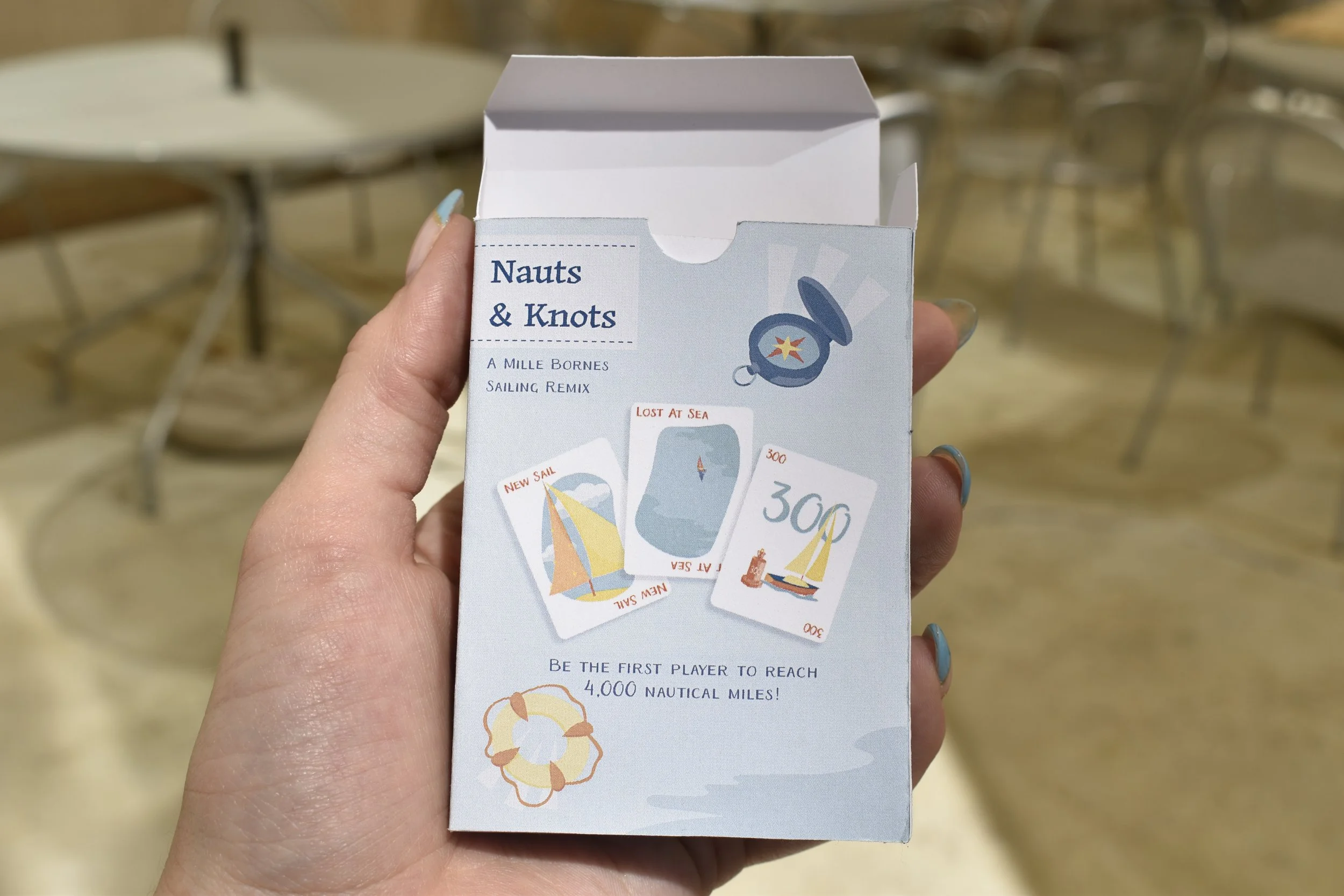Nauts & Knots:
Mille Bournes Redesign
Mille Bournes is a classic card game created in 1954 and well renowned for its graphic design. The game tasks players to travel 1,000 miles by car through a French countryside, while dealing with different obstacles along the way. Players are able to sabotage each other in their quest to cover this distance, and must remedy their roadblocks before they can advance mileage.
These images of the original game are from The Village Geek website.
Working with three other designers, I was part of an initiative to redesign this card game with a new interpretation. In our version of the game, players aim to travel 4,000 nautical miles from the coast of New York to Italy. Much like the original, our game features five hazards and a remedy and safety card for each. Along with each individual card, we also worked to design the box and instruction manual.
We began with large amounts of research to agree on a solid overall design direction exploring different color palettes, type faces, and visual style that we would generally want to follow. Color palettes where blues and oranges were emphasized stuck out to us as they mimic the colors of sunset on the water. We also recognized these arrangements as very neutral to any users interested in playing our game.
As a group, we divided each set of Hazard, Remedy, and Safety card amongst the four of us, as well as the packaging and instruction manual. After establishing the basic layouts of the card, such as the organic container holding the artwork and the typography, we began to work on our own card sets, checking in with each other to ensure consistency in the art direction. Through many modifications, the final card designs are pictured to the left.
Across the top row are displayed the distance cards, with the start and stop cards to the far left. The five columns of three cards each are the Hazard, Remedy, and Safety cards that are paired together. The game play is described in the instruction manual below.
After all of the design elements were completed digitally, we took our project to print. The printed sheets of cards were laser cut which allowed us the precise measurements and cuts to ensure that all of our dimensions were identical. We assembled the packaging and folded the instructions, loading our newly made box with the set of cards. The final version was tested amongst various other student groups who were able to open the game, read the instructions, and play it through. Images of the final printed project are pictured below.


